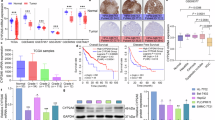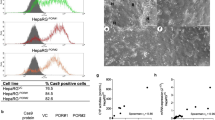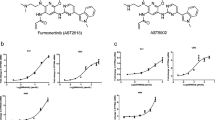Abstract
Aim:
Ginger rhizome is used worldwide as a spicy flavor agent. This study was designed to explore the potential effects of pungent ginger components, 6-, 8-, and 10-gingerol, on human cytochrome P450 (CYP450) enzymes that are responsible for the metabolism of many prescription drugs.
Methods:
The activities of human CYP2C9, CYP2C19, CYP2D6, and CYP3A4 were analyzed using Vivid P450 assay kits. The mRNA expression of CYP3A4 in human hepatocellular carcinoma cell line HepG2 was measured using quantitative real-time PCR assay.
Results:
All three gingerols potently inhibited CYP2C9 activity, exerted moderate inhibition on CYP2C19 and CYP3A4, and weak inhibion on CYP2D6. 8-Gingerol was the most potent in inhibition of P450 enzymes with IC50 values of 6.8, 12.5, 8.7, and 42.7 μmol/L for CYP2C9, CYP2C19, CYP3A4, and CYP2D6, respectively. By comparing the effects of gingerols on CYP3A4 with three different fluorescent substrate probes, it was demonstrated that the inhibition of gingerols on CYP3A4 had no substrate-dependence. In HepG2 cells, 8-gingerol and 10-gingerol inhibited, but 6-gingerol induced mRNA expression of CYP3A4.
Conclusion:
6-, 8-, and 10-gingerol suppress human cytochrome P450 activity, while 8- and 10-gingerol inhibit CYP3A4 expression. The results may have an implication for the use of ginger or ginger products when combined with therapeutic drugs that are metabolized by cytochrome P450 enzymes.
Similar content being viewed by others
Log in or create a free account to read this content
Gain free access to this article, as well as selected content from this journal and more on nature.com
or
References
Kawai T, Kinoshita K, Koyama K, Takahashi K . Anti-emetic principles of Magnolia obovata bark and Zingiber officinale rhizome. Planta Med 1994; 60: 17–20.
Chrubasik S, Pittler MH, Roufogalis BD . Zingiberis rhizoma: a comprehensive review on the ginger effect and efficacy profiles. Phytomedicine 2005; 12: 684–701.
Grant KL, Lutz RB . Alternative therapies: ginger. Am J Health Syst Pharm 2000; 57: 945–7.
Wei W, Chang YL, Xiao DW, Ping L, Lian WQ . Simultaneous determination of 6-gingerol, 8-gingerol, 10-gingerol and 6-shogaol in rat plasma by liquid chromatography-mass spectrometry: Application to pharmacokinetics. J Chromatogr B Analyt Technol Biomed Life Sci 2009; 877: 671–9.
Govindarajan VS . Ginger — chemistry, technology, and quality evaluation: part 1. Crit Rev Food Sci Nutr 1982; 17: 1–96.
Young HY, Luo YL, Cheng HY, Hsieh WC, Liao JC, Peng WH . Analgesic and anti-inflammatory activities of 6-Gingerol. J Ethnopharmacol 2005; 96: 207–10.
Kiuchi F, Iwakami S, Shibuya M, Hanaoka F, Sankawa U . Inhibition of prostaglandin and leukotriene biosynthesis by gingerols and diarylheptanoids. Chem Pharm Bull (Tokyo) 1992; 40: 387–91.
Shoji N, Iwasa A, Takemoto T, Ishida Y, Ohizumi Y . Cardiotonic principles of ginger (Zingiber officinale Roscoe). J Pharm Sci 1982; 71: 1174–5.
Ueki S, Miyoshi M, Shido O, Hasegawa J, Watanabe T . Systemic administration of 6-Gingerol, a pungent constituent of ginger, induces hypothermia in rats via an inhibitory effect on metabolic rate. Eur J Pharmacol 2008; 584: 87–92.
Park KK, Chun KS, Lee JM, Lee SS, Surh YJ . Inhibitory effects of 6-Gingerol, a major pungent principle of ginger, on phorbol ester-induced inflammation, epidermal ornithine decarboxylase activity and skin tumor promotion in ICR mice. Cancer Lett 1998; 129: 139–44.
Park YJ, Wen J, Bang S, Park SW, Song SY . 6-Gingerol induces cell cycle arrest and cell death of mutant p53-expressing pancreatic cancer cells. Yonsei Med J 2006; 47: 688–97.
Ishiguro K, Ando T, Maeda O, Ohmiya N, Niwa Y, Kadomatsu K, et al. Ginger ingredients reduce viability of gastric cancer cells via distinct mechanisms. Biochem Biophys Res Commun 2007; 362: 218–23.
Lee SH, Cekanova M, Baek SJ . Multiple mechanisms are involved in 6-gingerol-induced cell growth arrest and apoptosis in human colorectal cancer cells. Mol Carcinog 2008; 47: 197–208.
Lee HS, Seo EY, Kang NE, Kim WK . 6-Gingerol inhibits metastasis of MDA-MB-231 human breast cancer cells. J Nutr Biochem 2008; 19: 313–9.
Haniadka R, Rajeev AG, Palatty PL, Arora R, Baliga MS . Zingiber officinale (ginger) as an anti-emetic in cancer chemotherapy: a review. J Altern Complement Med 2012; 18: 440–4.
Schwertner HA, Rios DC . High-performance liquid chromatographic analysis of 6-gingerol, 8-gingerol, 10-gingerol, and 6-shogaol in ginger-containing dietary supplements, spices, teas, and beverages. J Chromatogr B Analyt Technol Biomed Life Sci 2007; 856: 41–7.
Zick SM, Djuric Z, Ruffin MT, Litzinger AJ, Normolle DP, Alrawi S, et al. Pharmacokinetics of 6-gingerol, 8-gingerol, 10-gingerol, and 6-shogaol and conjugate metabolites in healthy human subjects. Cancer Epidemiol Biomarkers Prev 2008; 17: 1930–6.
Sparreboom A, Cox MC, Acharya MR, Figg WD . Herbal remedies in the United States: potential adverse interactions with anticancer agents. J Clin Oncol 2004; 22: 2489–503.
Moon YJ, Wang X, Morris ME . Dietary flavonoids: effects on xenobiotic and carcinogen metabolism. Toxicol In Vitro 2006; 20: 187–210.
Eric Y, Kathy A . Interaction of herbal constituents with cytochrome P450 enzymes. Alternative and Complementary Therapies 2007; 13: 239–47.
Hao M, Ba Q, Yin J, Li J, Zhao Y, Wang H . Deglycosylated ginsenosides are more potent inducers of CYP1A1, CYP1A2 and CYP3A4 expression in HepG2 cells than glycosylated ginsenosides. Drug Metab Pharmacokinet 2011; 26: 201–5.
Trubetskoy OV, Gibson JR, Marks BD . Highly miniaturized formats for in vitro drug metabolism assays using vivid fluorescent substrates and recombinant human cytochrome P450 enzymes. J Biomol Screen 2005; 10: 56–66.
Marks BD, Thompson DV, Goossens TA, Trubetskoy OV . Highthroughput screening assays for the assessment of CYP2C9*1, CYP2C9*2, and CYP2C9*3 metabolism using fluorogenic Vivid substrates. J Biomol Screen 2004; 9: 439–49.
Marks BD, Smith RW, Braun HA, Goossens TA, Christenson M, Ozers MS, et al. A high throughput screening assay to screen for CYP2E1 metabolism and inhibition using a fluorogenic vivid p450 substrate. Assay Drug Dev Technol 2002; 1: 73–81.
Marks BD, Goossens TA, Braun HA, Ozers MS, Smith RW, Lebakken C, et al. High-throughput screening assays for CYP2B6 metabolism and inhibition using fluorogenic vivid substrates. AAPS PharmSci 2003; 5: E18.
Bell L, Bickford S, Nguyen PH, Wang J, He T, Zhang B, et al. Evaluation of fluorescence- and mass spectrometry-based CYP inhibition assays for use in drug discovery. J Biomol Screen 2008; 13: 343–53.
Zick SM, Ruffin MT, Djuric Z, Normolle D, Brenner DE . Quantitation of 6-, 8- and 10-gingerols and 6-shogaol in human plasma by high-performance liquid chromatography with electrochemical detection. Int J Biomed Sci 2010; 6: 233–40.
Nassar AF, Hollenberg PF, Scatina JA . Drug metabolism handbook: concepts and applications. New Jersey: John Wiley & Sons, Inc; 2009.
Cohen LH, Remley MJ, Raunig D, Vaz AD . In vitro drug interactions of cytochrome p450: an evaluation of fluorogenic to conventional substrates. Drug Metab Dispos 2003; 31: 1005–15.
Magnus IS, Sarah CS, Alvin G, Cristina RA . Influence of cytochrome P450 polymorphisms on drug therapies: Pharmacogenetic, pharmacoepigenetic and clinical aspects. Pharmacol Ther 2007; 116: 496–526.
Miners JO, Birkett DJ . Cytochrome P450 2C9: an enzyme of major importance in human drug metabolism. Br J Clin Pharmacol 1998; 45: 525–38.
Cascorbi I . Genetic basis of toxic reactions to drugs and chemicals. Toxicol Lett 2006; 162: 16–28.
Lamba JK, Lin YS, Schuetz EG, Thummel KE . Genetic contribution to variable human CYP3A-mediated metabolism. Adv Drug Deliv Rev 2002; 54: 1271–94.
Hao M, Zhao Y, Chen P, Huang H, Liu H, Jiang H, et al. Structure-activity relationship and substrate-dependent phenomena in effects of ginsenosides on activities of drug-metabolizing P450 enzymes. PLoS One 2008; 3: e2697.
Westerink WM, Schoonen WG . Cytochrome P450 enzyme levels in HepG2 cells and cryopreserved primary human hepatocytes and their induction in HepG2 cells. Toxicol In Vitro 2007; 21: 1581–91.
Acknowledgements
We thank Ms Yuan-yuan DAI at the Cancer Hospital/Institute, Chinese Academy of Medical Sciences, for her generous gift of sulfaphenazole. This study was supported by grants from the One Hundred Talents Program and Knowledge Innovation Program (KSCX2-EW-R-10) of the Chinese Academy of Sciences, the National Natural Science Foundation (81125020, 91029715, 31070680, 31101261, 81242002, and 31200569), the Ministry of Science and Technology of China (2012BAK01B00, 2011BAK10B00, and 2009CB919000), the Science and Technology Commission of Shanghai Municipality (12XD1407000, 12431900500, and 10391902100), and Xuhui Central Hospital (CRC2011001 and CRC2011004), Director Foundation (20090101) and the Food Safety Research Center and Key Laboratory of Nutrition and Metabolism of INS, SIBS, CAS. Pei-zhan CHEN and Qing-xi YUE were partially supported by the SA-SIBS scholarship program.
Author information
Authors and Affiliations
Corresponding author
Rights and permissions
About this article
Cite this article
Li, M., Chen, Pz., Yue, Qx. et al. Pungent ginger components modulates human cytochrome P450 enzymes in vitro. Acta Pharmacol Sin 34, 1237–1242 (2013). https://doi.org/10.1038/aps.2013.49
Received:
Accepted:
Published:
Issue date:
DOI: https://doi.org/10.1038/aps.2013.49
Keywords
This article is cited by
-
Herb-anticancer drug interactions in real life based on VigiBase, the WHO global database
Scientific Reports (2022)
-
Dual protective effect of ginger and rosemary extracts against CCl4-induced hepatotoxicity in rats
Environmental Science and Pollution Research (2018)



